By: Richard Van Heertum
The question
Hollywood has a rather pithy euphemism for its remakes: “reanimation of beloved properties.” Some of these reanimations have been rather compelling – as with Christopher Nolan’s Batman trilogy, the Coen Brothers take on True Grit, Cronenberg’s The Fly, Mangold’s 3:10 to Yuma or De Palma’s Scarface. However, one could argue the vast majority pale in comparison to their forebears. This is even truer with the endless sequels, prequels and reboots so many of the franchises engender. The question that then emerges is why the studios are so intent on a project of endless recycling that would leave any dedicated environmentalist green with envy?
Hollywood’s formula, and its biggest problem
The dirty little secret Hollywood just doesn’t want you to know is that the very formula that creates huge moneymakers that keep the studios afloat is also at the heart of their current troubles. Movies just aren’t selling tickets or making money at the rates they did in the past, and some worry the entire industry is in the midst of an unstoppable death spiral.
In 1930, the first year for which accurate figures were available, 80 million people went to the movies each week, which translated to about 65% of the US population. By 2000, that figure had dropped to 27.3 million, or 9.7%. Extrapolating data from last year, about 25.7 million headed out to theaters each week, netting 7.8% of the public. Ticket sales in the period since 1995 actually peaked in 2002, at 1,576,889,132 tickets sold for the year, and have steadily declined ever since, to 1,334,595,848 last year. However, because of increasing ticket prices, gross returns have steadily risen during this period, to box office sales of $11.25 billion last year. Should we then conclude that the model is working?
Not exactly, according to market insiders, who point out that the vast majority of the moviegoers are attending the big budget, highly marketed films coming out of the big studios, with a 15% decline in profits overall reported for last year and half of the gain going to one studio – Disney, which added the Star Wars franchise and Pixar to their empire in recent years. Essentially, as Doug Creutz of Cowen and Company argues in Vanity Fair, “You have a structural problem in the movie industry right now. Too many expensive movies and not enough people to see them.” To wit, look at a late weekend in December where star-studded, well-reviewed films including Patriots Day, Hidden Figures, Silence, Sing, Passengers, Why Him, and Assassin’s Creed had to compete against one another and a host of Oscar-bait films like La La Land, Julieta, Live by Night, and Fences.
In this final installation of the series, I turn to the question of what this obsessive recapitulation might tell us about television and film today, and the broader cultural implications of our apparent inability to ever say goodbye to our favorite characters and stories.
Why, oh why, must I see you again?
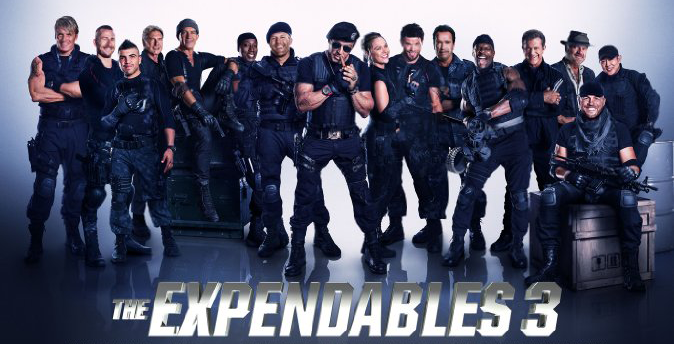
Really, really bad. Still made money internationally.
The obvious answer to the ever growing recapitulation of stories in Hollywood and on television is the cynicism of the studios themselves, fully aware of the figure I reported above, alongside the numbers from Part IV of this series, showing that franchise films, sequels, prequels and reboots occupy an increasingly large percentage of the Top 20 highest-grossing films each year, and the vast majority of the highest grossing films of all times (not adjusted for inflation). This is coupled with findings on average gross returns, showing adventure and action far outstripping dramas and comedies; Comic book adaptations, general spinoffs, and TV adaptations earning more than original screenplays; and Superhero films far outpacing kid’s fiction, sci-fi, contemporary fiction and fantasy. And, as I noted earlier in the series, it is often the later installments of a franchise that garner the biggest returns.
Yet that cannot fully explain the trend. Even a big budget, big stars, a well-crafted blitz marketing campaign, and good review do not guarantee box office and profits in the end. So, two other explanations must be considered beyond the business model angle. One: people suffer from a myopic nostalgia that seems to know no bounds and two: that hype now supercedes quality in important ways. Which of the three possibilities best summarizes the state of the industry today: audiences that want stories and characters that never die, marketing and bloated budgets all but guaranteeing (some) audiences will come, or a new business model afraid to take chances?
The most likely answer seems to be some combination of the three, with a fair amount of weight placed on the business model. Just looking at the number of sequels, prequels, adaptations and reboots we see today makes it hard not to conclude that Hollywood is in a crisis of confidence, afraid that no new idea, as good as it looks on paper, is as sure a bet as recycling something – nay anything – that had even a modicum of success in the past. In that sense, it is merely the most recent evolution of the Hollywood formula, honed over the 90-year journey to the present but still reliant on the central ideas of closed romantic realism and giving audiences what they want – happy endings most of all. The increasing importance of foreign markets only exacerbates these tendencies, as studios must ensure that their films are easily translatable across languages and cultures. This is more easily accomplished if plot and characters are either secondary to special effects and spectacle or the audiences have grown accustomed to those characters and stories because they exist within familiar universes, a modern-day commedia dell’arte.
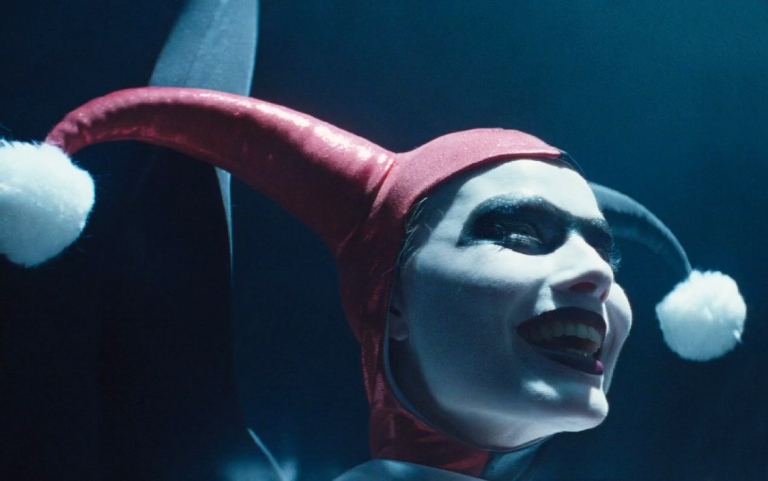
Some harlequins are more subtle than others.
Culture v. commerce
In considering the other two points, we might return to a question posed in Part IV of this series: What does our nostalgic hunger for the return of Twin Peaks or any of the other rebooted shows or movies tell us about ourselves and American culture today? What does the general American obsession with serialized television, binge watching entire seasons of shows in a day or two, endless sequels and generational franchises ultimately say about us? Could it be that television and franchise film are the true in loco parentis for not only children but all of us? Could it be that popular culture, in its mainstream or alternative iterations, is really the only culture there is in America today? Fred Jamison made this very argument way back in 1991, but it appears truer today than at any time in history.
We follow the stories of others as they struggle through their lives along faster, tighter and more interesting trajectories and hunger to see the next chapter. No ending is sufficient to meet our insatiable appetites, as voracious as an American New Wave-crushing Jaws, a Death Star laser beam or Jason Voorhees, caught in a Hindu-inspired nightmare of endless reincarnation. Three directors from the ’70s might have awoken this tireless desire for the never-ending story. It was arguably Friedkin, Spielberg and Lucas who created the new formula for success, all but killing the idea of a 90 to 180-minute standalone narrative, perhaps irrevocably. That formula involved targeting a young audience, shifting from realism toward fantasy, moving outside of cities to the suburbs where more moviegoers were beginning to reside, focusing on sensation, shock value and special effects over story, character arc and experimentation, bigger budgets, bigger ad campaigns, and ultimately taking the power away from directors and giving it back to the studios. Art gave way back to commerce and audiences seemed to eat it up. At its core, the key idea, particularly with Spielberg and Lucas, was a nostalgia for a past that might be long gone, but that could be recaptured on film, glazed with a fantastical veneer and then told in varied form over and over again.
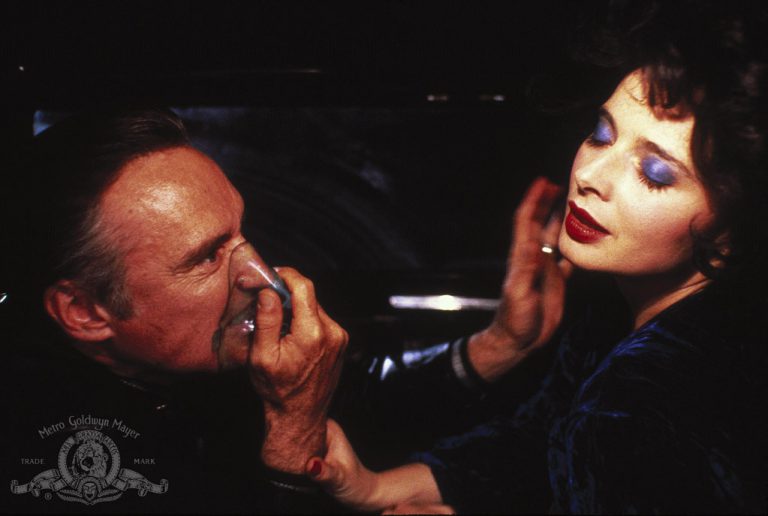
David Lynch and Dennis Hopper, keeping it weird.
There were a few innovative directors making interesting films at a time when Hollywood was creating the foundation for the world we live in today, most prominently David Lynch. He had turned heads back in 1977 with his bizarre horror film Eraserhead and even more with the quietly brilliant Elephant Man three years later. He took on Dune in 1984, to widespread disappointment, and then orchestrated his masterpiece – the classic neo-Noir Blue Velvet that would bring together his signature hybrid style of surrealism, German Expressionism, Film Noir and an oddly innocent ’50s nostalgia. It was four years later that Twin Peaks premiered, providing something that, while commonplace today, was quite unique in the twilight of the last century – a story centered around a beautiful young girl being murdered, several intertwined story lines, explicit sexual content and a darkness that was shocking to the AIDS-inspired sexual panic of that era. The groundbreaking show opened television up to a more mature, complex form of storytelling that challenged audiences and the more conservative politics of Reagan and Bush (even if it arguably supported it in other ways). The desire to revisit the creepy town yet again – even as Psych brought back many of the characters in a fifth season episode – brings us full circle, as if there are no new stories worth seeing when we can return to revisit old friends.
The triumph of nostalgia

After 6 series (5 live-action, 1 animated) and 13 films, what’s left to discover, other than the financial viability of a subscription streaming service?
Remakes, sequels, reboots and prequels now dominate the box office as never before, often taking up 60 to 80% of the Top 20 or 30 films each year. In 2014 alone, eight of the top 10 highest grossing films were sequels (Transformers, The Hobbit, The Hunger Games, X-Men, Captain America, Spider-Man, Planet of the Apes) or adaptations (Maleficent). The only two original stories were Guardians of the Galaxy (which will soon be available in sequel form) and Interstellar. Or look at the wildly popular Veronica Mars series, which crowd funded the necessary money to make a film in a few hours after all the studios passed on it, only to disappoint salivating fans when it finally was released. Yet the response to the tepid reception of the film might show how desperate executives are to bleed every drop of money out of these stones, as there has since been a short web series with side character Dick Casablancas (pretty silly) and two novels that pick up right after the movie ends. Television, of course, has also followed this trend in the other direction and the recycling of storylines now moves seamlessly between the two spheres.
It appears nostalgic myopia is a very real thing, with that nostalgia no longer attached to anything experienced in the real world, but instead a hunger for the return of stories from our youth. Given how important television and film has become to the very core of our being as children, and how much money is poured into marketing these spectacular fantasy worlds to the young, is it any wonder that we wish to return to those fantasy visions of our childhood, rather than dealing with the real, tangible problems that beset us today? That is the very idea at the heart of Debord’s spectacle, where we live in a representational world superimposed on top of reality, becoming reality itself, as the Matrix hypothesized. Rather than memories of lost friendships, of travel, of the game-winning basket in our junior high league, we instead turn backwards toward our favored stories from Tinsel Town, finding there an idealized vision of what we wish our childhoods had been. As we grow older, and the world seeks to break us, it is those salving narratives that give us flight from our quotidian ennui and discontent.
And this leads to the third point: that hype and familiarity are the easiest way to sell to audiences and that those audiences seem to respond best to that which is touted most. The percentage of the tentpole budgets now spent on advertising often reach or surpass 50% of a film, a figure that was first breached by Miramax in the ’90s. Now, it is the norm and should be considered as a key reason so many films and television shows continue on in one form or another in perpetuity. For a $100 million film, that means a full $50 million of advertising. For a $200 million film, we get $100 million in ads. And those marketing campaigns are well-orchestrated from beginning to end, based on a three-pronged approach that first builds momentum with teasers – going so far as having teasers of the teaser previews – then the blitz campaign and, finally, a reminder right before the film opens. It doesn’t stop there though, as franchises like The Hunger Games now use online promoters as another strategy to cull young viewers, offering free prizes, insider information and other enticements that can lead youth to spend countless hours as unpaid, and uncredited, advertising interns (see Generation Like for full articulation of this idea). On top of this, is the dramatic upturn in advanced research now undertaken by the industry to ensure that the products they put out fully satisfy the audiences they are targeting. Putting it together, we find two industries particularly adept at creating hype for their favored products, all but guaranteeing that they become “must see” TV or film of the moment.
Beyond the obvious….or maybe most obvious of all
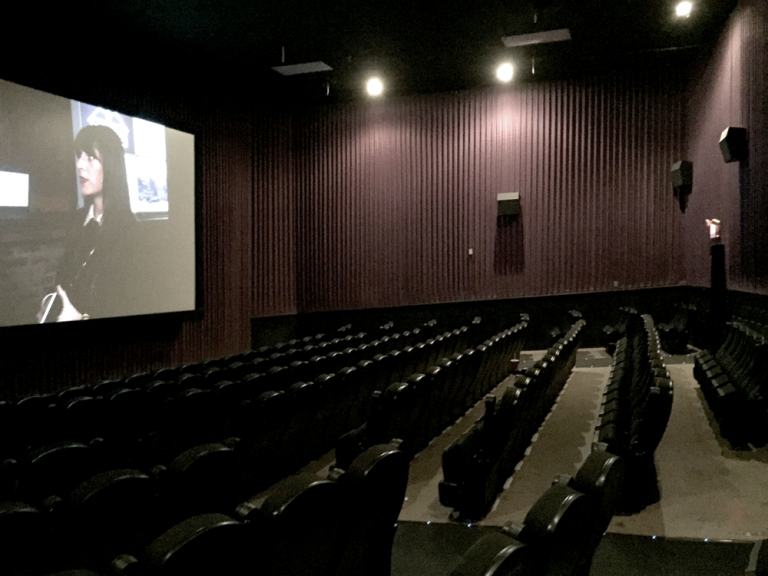
Shrinking domestic audiences. (Photo credit – Famartin, Wikimedia Commons.)
There are three other explanations we should at least consider, including the demographic makeup of filmgoers, postmodern artistic conceit and the rather obvious conclusion that many Americans just have bad taste. Let’s look at each in turn. To start is the age demographics of filmgoers. Returning to three of the key players from above, Friedkin, Spielberg and Lucas made films in the 70s and 80s that suburban and urban kids went to see in droves, often returning for a second, third, or even fourth viewing. The trend only intensified over the years and, as DVD sales dried up a few years ago, the studios doubled-down on this strategy, unable to predict the success of anything except what had a ready-made audience in wait, with youth as their key target. According to a 2014 study from the MPAA, the age demographic that hits theatres most often are the young, with 41% of “frequent moviegoers” 24 or young and a full 60% under 40. Looking at per capita attendance, 12-17-year-olds (6.4 films per year) and 18-24-year-olds (6.2 per year) far outpaced any other age group, with 2-11-year-olds seeing 3.3, 25-39-year-olds 3.7, 40-49-year-olds 3.6, those 50-59 3.1 and adults 60 and over a measly 2.4. Within the context of sequels, prequels and reboots, younger audiences are more apt to see a film that includes stars they know and the aesthetic sensibilities of their time (thus the reboot or remake) and more apt to follow storylines for longer, as that is how they have been socialized.
The second explanation relates to the very nature of art in a postmodern world. Modernism was founded on the idea of making it different or making it new. With a shift that might best be exemplified by the Pop Art of Andy Warhol, the death knell of modernism was tolling as a turn to irony, intertextuality and recapitulation ensued. Instead of uniqueness and individualism, art switched focus to the recycling of the past, founded on the idea that nothing was truly original and we were mired in the midst of an exhaustion of ideas. We see this most explicitly in the work of Jeff Koons, who often doesn’t even do his own work, in the bizarre video installations of Matthew Barney and the more artistically interesting but still fully intertextual photographs of Cindy Sherman, but we also see it in popular street artists of today like Banksy and JR. And, of course, we see it as well on popular television shows like The Simpsons, Family Guy, and South Park and in ironic film series like Scream and Scarry Movie. The recycling of the old and the constant reference to the past is simply the artistic sensibility of our moment and this would naturally extend to the dual worlds of televisual and filmic art. When a population is socialized on constant referencing to the past, on the inside jokes of appropriation and pastiche and on the notion that newness is just hackneyed oldness in a nicer frame, is it any wonder that we are more accepting of the recycling craze?
Finally, we have the salient point that many Americans digest whatever cultural fare is fed to them. Not just the young, but many of us. The great cynic H. L. Mencken once wrote, “No one in the world, so far as I know – and I have searched the records for years, and employed agents to help me – has ever lost money by underestimating the intelligence of the great mass of the plain people.” A bit harsh, surely, but with two of our last three presidents being George W. Bush and Donald J. Trump, can we really disagree with this assessment? Sure, we must consider the makeup of our domestic audiences and must also extend our analysis to the hordes of foreigners going to theaters to see the worst of American cinema, but just asking the question of why people feel compelled to wait in long lines and then sit in cramped theaters just to be the first to see the latest crapfest from Hollywood speaks volumes.
Hollywood has, in fact, developed strategies to tie their most expensive products to a proclivity they have labeled FOMO, or Fear Of Missing Out. Disney was the best at this last year, racking up an impressive 50% of all the profits in the industry, with Dave Hollis, their executive vice president of theatrical exhibitions, sales and distribution arguing, “With our movies, there’s some social currency in being part of the phenomenon.” The guiding principle of greenlighting, then, comes down to two questions they want audiences to answer in the affirmative: “Do I need to see this movie now, and do I need to see this movie in a movie theater?” Those questions hearken back to Hollywood’s original answer to the threat posed by television – create blockbusters that are social events and use new technologies like improved sound, color, wider screens and 3D to differentiate movies as a product from what viewers could otherwise watch in black and white from the comfort of their homes. The vast array of alternatives now available means that many will only head out to the theater a few times a year and want something they can’t experience with the same awe-inspiring wonder on even the best of home entertainment setups.
Thus, special effects play a larger and larger role in that differentiation, with comprehensive advertising campaigns that make one think they are missing out on the latest cultural event if they wait for the film to arrive on their small screens in one instantiation or another. Referencing back to Jameson’s point, one could extrapolate to the idea that these spectacles, whether on the big screen or the small, effectively monopolize our culture today, replacing more earnest and interactive spectacles of the past. Why head to the parade and peak through a sea of people when you can see the same event from the comfort of your home? Why hang out with friends who might bore you when the ones on TV and film have their lines refined to the point that they meet the Hitchcockian definition of drama (“life with the dull bits cut out”). By extension, why strive for a life of meaning and accomplishment at all when it is far easier to take pleasure in the fantasy-infused lives of others?
The disconnect between profits and quality
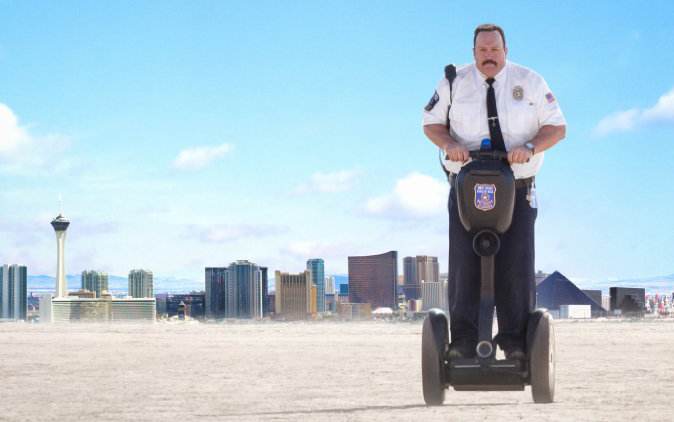
6% on Rotten Tomatoes. $103 million in tickets sold.
Sequels rarely live up to the original, and there tends to be a law of diminishing returns of not only quality and critical reception but profits as well. Looking at successful franchises of the past decade or so, we almost invariably find a flop in their midst from Little Fockers, the Matrix Revolutions, and Men in Black II to Shrek the Third, Aliens vs. Predator: Requiem, and the absurdly overwrought Hangover III. How else besides cynicism and contempt for audiences can we explain three Expendables films or, worse still, a second Paul Blart: Mall Cop? Well, the three Expendables films actually brought in gross receipts of $786 million and the Paul Blart sequel an astounding $103 million (on top of the $183 million the original garnered).
Looking at the two Blarts we find composite Rotten Tomato scores of 33% and 6%, respectively, with audience scores of 43% for each. What does this tell us? The same 43% that liked the original went back to see the second? Actually, the math isn’t that far off, and one assumes the studio that put the film out (Sony Pictures for those interested in clever revenge plots) made exactly that sort of calculation before spending $26 million on producing, distributing and, most importantly, advertising this hunk of dung. With the Expendables, critics gave the films 41%, 65% (actually more successful than the first in earnings and ratings), and 33% ratings, respectively. The extraordinary thing about the Expendables is how much of their profit is due to foreign audiences, with 81% of the third film gross, 72% of the second, and 62% of the first, carrying this franchise throughout its run and actually growing in importance as the quality of the product arguably waned. This is one of the realities of the contemporary movie industry, where what America audiences want (for example, more comedies) is secondary to what the action films can garner in the international market.
Moving to comedy, one can see a momentary nostalgia for the ’90s hit Dumb and Dumber percolate to the surface, particularly given the rather sorry state of comedy film today dominated by the pabulum Adam Sandler puts out, the decreasing returns of Judd Apatow’s vision, and the bawdy comedy of Seth McFarlaine (his oeuvre including the overwrought A Million Ways to Die in the West and slightly more palatable Ted sequel). The cynicism with which that Dumber sequel was made should beg the question of whether it was really necessary and why anyone went after reading the reviews or talking to a friend. It turns a lot of people either don’t bother reading reviews at all or hang out with people with really bad taste, at least among those that went and saw this stinker, which earned a whopping $169.8 million in gross receipts, as the third film in the franchise (with Dumb and Dumberer: When Harry Met Lloyd of 2003 the only “bomb”, though it still made $20 million on a budget of $19). Nothing seems beyond the fold of ’80s-’90s nostalgia at the moment. We have already had a terrible Arthur remake in 2011, a worse Bad News Bear retread back in 2005 alongside other bombs like Conan the Barbarian (2011), Fame (2009), Ice Castles (from 1978, to be fair) and A Room with a View. The embarrassingly saccharine Full House is back, 24 was revived to general bemusement, MTV created a Scream TV show, Top Gun is bringing Cold War jingoistic masculinity back to the big screen and Pee Wee’s Big Holiday came out last year. Even the quietly brilliant indie hit Welcome to the Dollhouse is producing a sequel. It seems Gen-X is in the vogue for its 15 minutes (or 15 years), but are these shows targeting us or simply the nostalgic look back at the younger generation?
Even Broadway is guilty of the love affair with recasting old stories anew. Looking across the shining lights of Midtown we see more Disney than O’Neill, more movie-based musical than original content and more spectacle than speculation. In just the past couple of decades, we have seen adaptations of The Lion King, Big Fish, The Producers, 9 to 5, Priscilla, Queen of the Desert, Legally Blonde, Young Frankenstein, Saturday Night Fever, Xanadu, Bring it On, Beauty and the Beast (soon available as a live-action reboot in movie theaters), Rocky, Heathers, Shrek, Bullets Over Broadway and, maybe most apropos to the theme, Spider-Man: Turn of the Dark, among too many others to mention. Bruce Willis and Laurie Metcalfe currently star in Misery, a flat affair that makes one wonder why the remake of a movie, based on a novel, over 25 years in arrears, is taking up space that might better be used for politically or socially poignant theater that seems more indispensable today than at any time in history, particularly when only those who have lived in caves, or don’t have cable, would not know the tension to come. Ironically, just a couple of years ago, the Best Picture Oscar went to a film, Birdman, about an ex-Superhero star trying to regain legitimacy by turning to Broadway, essentially bringing all the themes mentioned here together into one film.
What do audiences get out of seeing the same stories?
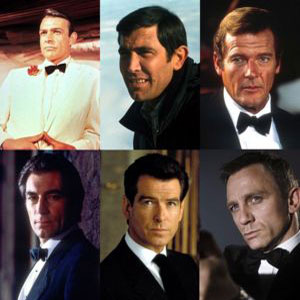
The only one that really counts is top left.
The question this sea of sameness seems to compel one to ask is what we get from these endless reboots and revivals? Looking at one example, the well-reviewed Daredevil that premiered last year on Netflix, the answer may be “very little.” It is a compelling show on the surface about a moralistic blind superhero with acute sensual perception trying to save Hell’s Kitchen from a corrupt criminal/corporate enterprise bent on improving the city with their own warped vision of urban renewal. It has a Noir-ish aesthetic, kinetic fight scenes, strong acting and several interchanging love stories. And it does have messages dealing explicitly with issues of social justice and complex renderings of how a city and its residents are pushed toward cynicism and crime. Yet below the slick sheen is the usual mawkish, Manichean superhero formula – a child avenging a wronged father, a criminal the product of a troubled childhood, internecine battles within a crime syndicate, the superhero eschewing love to continue his essential work, absolute good fighting absolute (if perversely well-intentioned) evil, and a conservative worldview of corruption in all our social institutions (the media, the police, the justice system and politics). There is more nuance in that the superhero here is fighting for social justice and against corruption, trying to help those suffering through poverty, abject quality of life and violence. The criminal mastermind is shown as a flawed human (though that is often the case in more contemporary superhero fare) and there is a strong supporting cast. But at its core, all the show really adds to the endless list of crime procedurals and superhero films and television shows is a substantially more violent twist, with bloody decapitations, murders of fathers by sons and long, drawn out fight scenes right out of an old Kung Fu film. Really, it’s only innovation in the end is crossing several genre formulas together into one jumbled mass that is only unique in the clichés it fits into its 13 hours. And that is no innovation at all, if we’re being honest. That season 2 came out early this year.
Looking below the best of the remakes, unoriginal but at least decently done, we find a sea of films that are inferior adaptations of their forebears. There is the truly horrific, like The Omen (2006), Swept Away (2002), Clash of the Titans (2010), Total Recall (2012), The Haunting (1999), Oldboy (2013) or Psycho (1998), the mildly offense à la the Smith-family-dynasty building Karate Kid (2010), The Manchurian Candidate (2004), Dinner for Schmucks (not that great an original to begin with), or Godzilla (1998) or the good but probably not worth it along the lines of Girl with the Dragon Tattoo (2011 – only two years after the excellent Swedish adaptation) or Beauty and the Beast (supposedly). The remake landscape seems to only be accelerating though, with a whole host of old favorites slated for future release, including Splash (1984), Mary Poppins (1964), Wargames (1983), Logan’s Run (1976), Porky’s (1981), Drop Dead Fred (1991), and Soapdish (1991). Many of these films beg the question of why, particularly when they were not that great to begin with (Overboard (1987), Jumanji (1995), or Commando (1985)), or maybe even more so when some consider them among the best of their genre (à la An American Werewolf in London (1981)). Am I missing something, or are all of these films available on VHS, DVD, one of the thousands of cable channels, pirated, or on-demand? With foreign films, one understand that mainstream American audiences don’t like to read words across the bottom of their screens, or words of any kind not attached to a tweet, snap chat or Facebook post these days for some, but with most of these remakes, I would rather see the films dubbed than redone.
Of course, there is a naivety at the heart of this essay, namely the belief that art has ever had any providence over commerce in the long history of Hollywood. Lest us forget that Buster Keaton’s career was all but destroyed by what many consider one of the masterpieces of the silent era (The General), that even Charlie Chaplin left the country in shame soon after Monsieur Verdoux, that Orson Welles’ reward for creating what is generally considered among the greatest films of all times was an unwelcome alternate ending to his next project The Magnificent Ambersons (leading to his own self-imposed exile in Europe), that Martin Scorsese had trouble getting work after arguably making the masterpiece of the ’80s, Raging Bull, or that Coppola and Altman largely disappeared for over a decade after their fecund and profitable ’70s.
What does the future hold?

Strawman extrapolation (Photo credit – André Alliot, Wikimedia Commons.)
Where does Hollywood go from here? Attendance and profits are down, the franchise and recycling trends only accelerating and television, while comfortably immersed in its second golden age, increasingly glomming on to the endless desire for recapitulation. The studios will reach further out to international markets, ride their franchises for as long as they draw in audiences and capitalize on new technologies to further differentiate themselves from television and related streaming formats. Competition for viewers only grows fiercer with each passing year and that generally means, if history is any indicator, increasingly playing to the lowest common denominator.
Some believe this is a zero-sum game that will ultimately hasten the end of Hollywood as we know it, though I’m less certain this is the direction we are heading. It is important to at least acknowledge that we still have great directors and producers creating quality products on the margins, and that some of these find their way into the maelstrom of mainstream entertainment. In just the past year, excellent films and television like Moonlight, Hell or High Water, OJ: Made in America, Rectify, Manchester by the Sea, Arrival, and Breaking Bad have aired or been released. And the independent market is as vibrant as ever, even as it exists further on the margins than two decades ago, while television continues to impress across all of its delivery nodes.
Returning to the question at hand, it appears Hollywood is planning for its future to ensure it doesn’t follow the moribund fate of its friends in the music, book and newspaper industries, all disrupted by modern technologies that allowed consumers to be more discerning in their consumption and to do that consuming from the comfort of their homes. The early indicators are not promising, with profits for the Big-Five studios – Twentieth Century Fox, Warner Bros., Paramount, Universal and Disney – down a collective 40% between 2007 and 11 and these studios now accounting for less than 10% of their parent companies’ profits. On top of this is the added competition from Silicon Valley, with Netflix spending $6 billion a year on original programming, Amazon not far behind, and Apple, Facebook and Snapchat all trying to get a foothold in the industry, while the TV choices continue to proliferate. Yet Hollywood still does make profits and their model for moving forward is to make the movie experience that much more awe-inspiring, with 3D, IMAX and, possibly in the future, virtual reality. More troubling, they appear to be testing the possibility of using modern technology to replace the human element in films, from automated filming and algorithmic cutting to C.G.I. actors that look almost as real as the ones they pay so much and, most terrifying of all, A.I. scriptwriting. In a nod to the further integration of the trends discussed throughout this series, there is also the idea of more and more films based on videogames and toys.
In the end, mediocrity breeds mediocrity and the sands of time slowly wisp away memories of more ambitious times. Any film history buff will probably rate the ’70s at the apogee of American filmmaking and one would be hard-pressed to disagree. But even after the troubling Lucas and Spielberg-led ’80s, we still had a ’90s that included the flowering of Spike Lee, Hal Hartley, Steven Soderbergh, Quentin Tarantino, John Singleton as well as the revivals of Martin Scorsese, Robert Altman and even, to a lesser degree, Francis Ford Coppola. Quality films are still being made, as they always have been, but they have been pushed to the margins so firmly that we pretend 12 Years a Slave is an epic, Moonlight a masterpiece and La La Land the second coming of Gone with the Wind.
In this environment, only consumers can alter the current zeitgeist, but they seem as unwilling as studios to take a chance on the new. And so the merry-go-round keeps turning.


No Comments on "Endless nostalgia: Hollywood in the hinterland, past, present, & future"